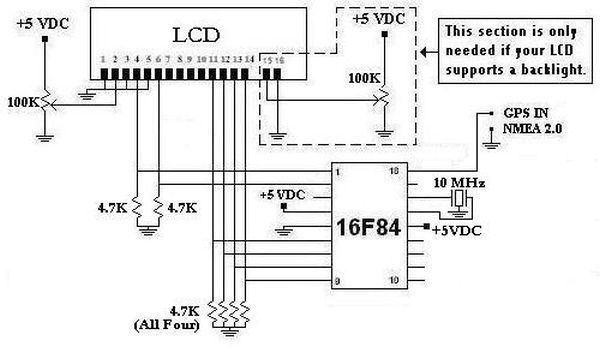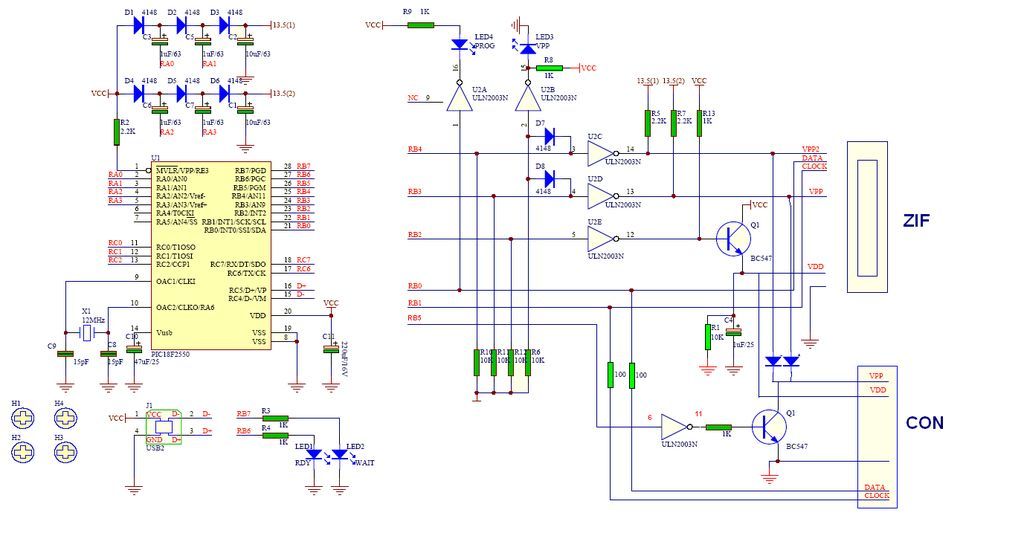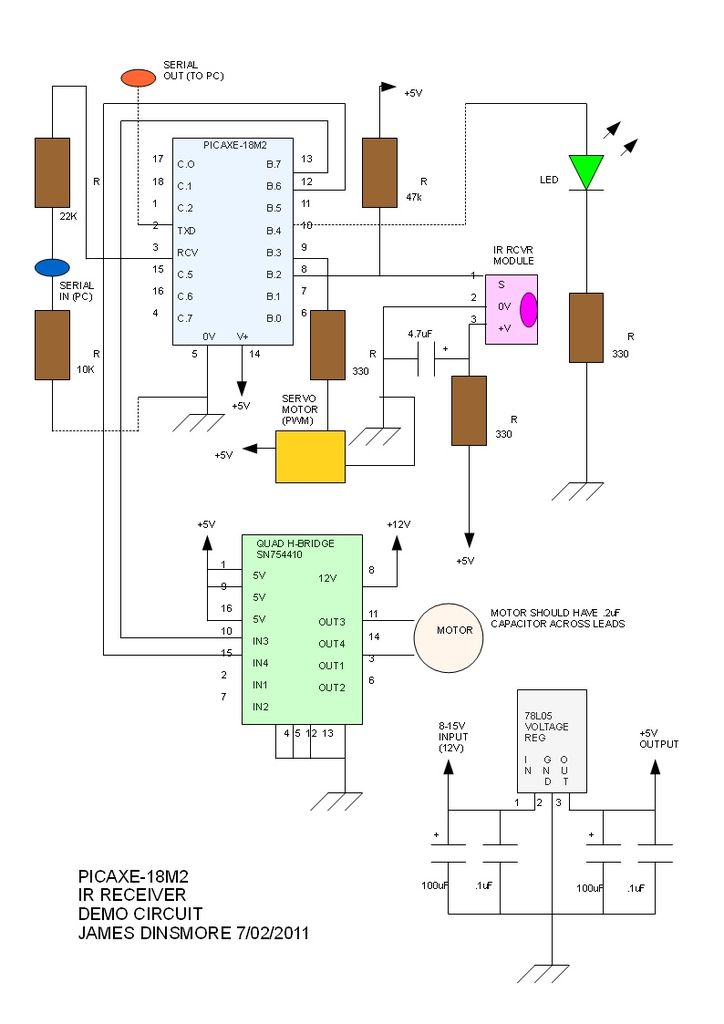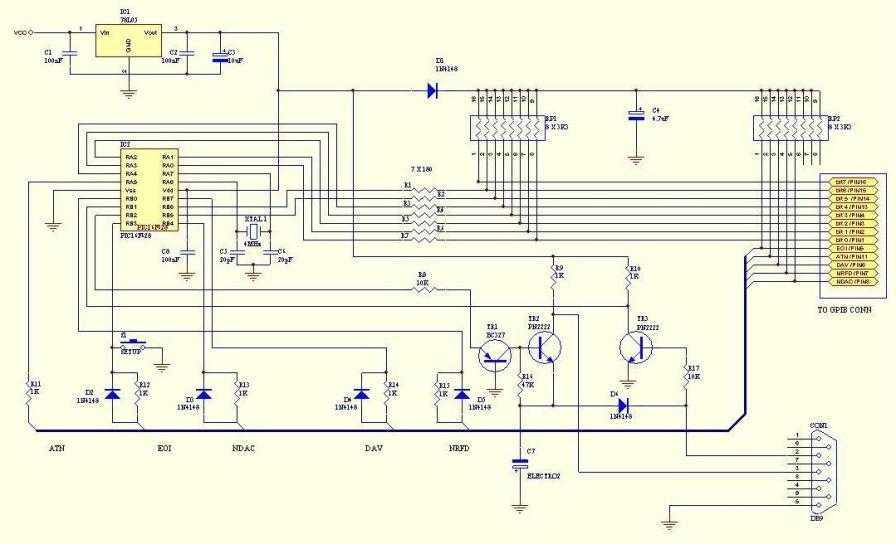
Classic PIC Programmer
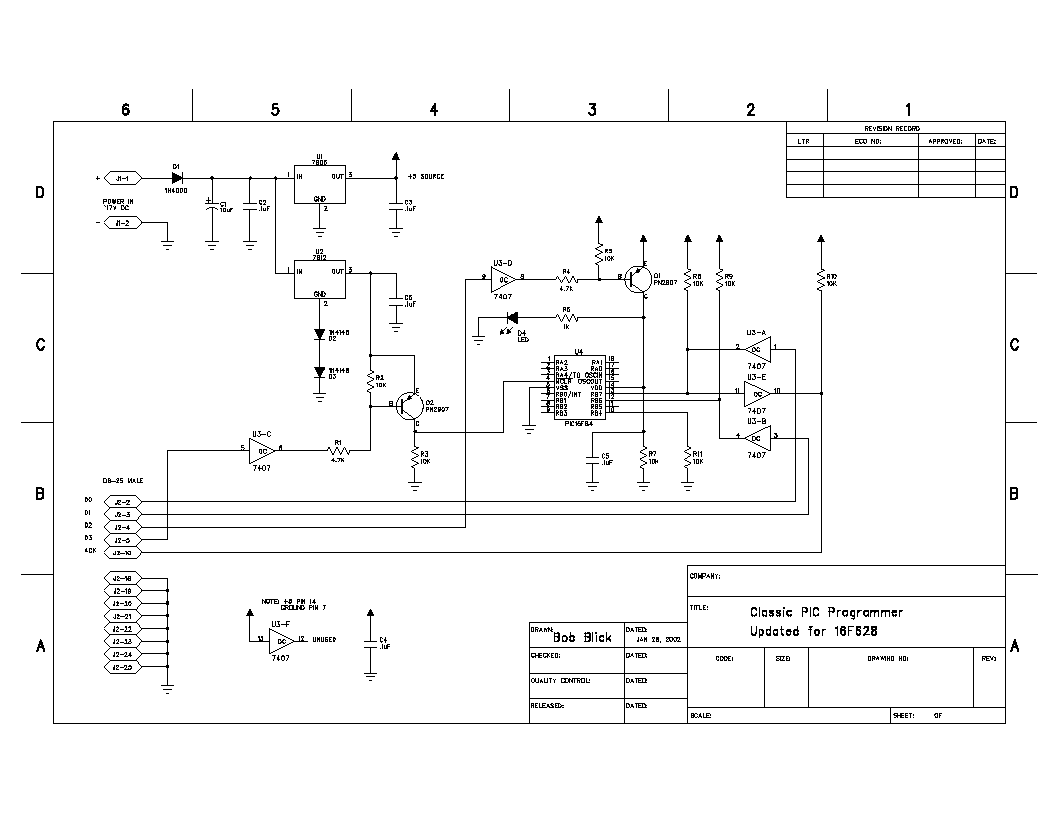
This is my own version of the classic PIC 16C84/16F84 programmer. The design is originally by David Tait. I’ve made a few changes, redrawn the schematic and done a board layout. All the files you will need are linked below, including software you’ll need to operate it. The software is not by me, I’m just including it for your convenience, and you should follow any usage requests the authors have made.
The PIC 16C84/16F84 programmer is designed to facilitate the programming of Microchip's PIC microcontrollers, specifically the 16C84 and 16F84 models. The schematic typically includes a microcontroller socket, which allows for the insertion of the target PIC device, along with necessary connections to the programming pins: MCLR (Master Clear), VDD (Power Supply), and VSS (Ground).
The programmer operates by sending a series of voltage levels to the programming pins of the PIC microcontroller. The circuit usually features a USB or serial interface, allowing for communication with a host computer. This interface is crucial for transmitting the program data to be written into the microcontroller's memory.
Power supply considerations are essential, as the circuit must provide stable voltage levels to the PIC device during programming. Typically, a voltage regulator may be included to ensure that the VDD pin receives a consistent 5V supply. Decoupling capacitors are often placed near the power pins of the microcontroller to filter out any noise that could affect programming reliability.
The programmer may also include indicator LEDs to signal the status of the programming operation. These LEDs can provide visual feedback, indicating when the programmer is actively writing to the microcontroller or if an error has occurred.
In terms of board layout, careful consideration should be given to trace routing to minimize interference and ensure reliable connections. It is advisable to keep the programming lines short and direct, reducing the potential for crosstalk or signal degradation.
Overall, this programmer is a versatile tool for developers working with PIC microcontrollers, providing an accessible means to upload firmware and test microcontroller functionality. The inclusion of the original design files and software enhances usability, allowing users to replicate or modify the design as needed.This is my own version of the classic PIC 16C84/16F84 programmer. The design is originally by David Tait. I`ve made a few changes, redrawn the schematic and done a board layout. All the files you will need are linked below, including software you`ll need to operate it. The software is not by me, I`m just including it for your convenience, and you should follow any usage requests the authors have made. 🔗 External reference
The PIC 16C84/16F84 programmer is designed to facilitate the programming of Microchip's PIC microcontrollers, specifically the 16C84 and 16F84 models. The schematic typically includes a microcontroller socket, which allows for the insertion of the target PIC device, along with necessary connections to the programming pins: MCLR (Master Clear), VDD (Power Supply), and VSS (Ground).
The programmer operates by sending a series of voltage levels to the programming pins of the PIC microcontroller. The circuit usually features a USB or serial interface, allowing for communication with a host computer. This interface is crucial for transmitting the program data to be written into the microcontroller's memory.
Power supply considerations are essential, as the circuit must provide stable voltage levels to the PIC device during programming. Typically, a voltage regulator may be included to ensure that the VDD pin receives a consistent 5V supply. Decoupling capacitors are often placed near the power pins of the microcontroller to filter out any noise that could affect programming reliability.
The programmer may also include indicator LEDs to signal the status of the programming operation. These LEDs can provide visual feedback, indicating when the programmer is actively writing to the microcontroller or if an error has occurred.
In terms of board layout, careful consideration should be given to trace routing to minimize interference and ensure reliable connections. It is advisable to keep the programming lines short and direct, reducing the potential for crosstalk or signal degradation.
Overall, this programmer is a versatile tool for developers working with PIC microcontrollers, providing an accessible means to upload firmware and test microcontroller functionality. The inclusion of the original design files and software enhances usability, allowing users to replicate or modify the design as needed.This is my own version of the classic PIC 16C84/16F84 programmer. The design is originally by David Tait. I`ve made a few changes, redrawn the schematic and done a board layout. All the files you will need are linked below, including software you`ll need to operate it. The software is not by me, I`m just including it for your convenience, and you should follow any usage requests the authors have made. 🔗 External reference
Warning: include(partials/cookie-banner.php): Failed to open stream: Permission denied in /var/www/html/nextgr/view-circuit.php on line 713
Warning: include(): Failed opening 'partials/cookie-banner.php' for inclusion (include_path='.:/usr/share/php') in /var/www/html/nextgr/view-circuit.php on line 713
